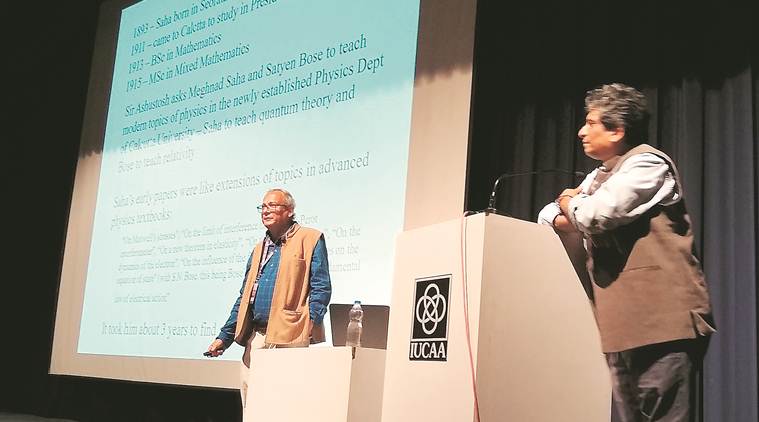 Eminent scientist Arnab Rai Choudhuri during a public talk titled ‘How Saha ionisation was discovered’, Monday. (Express photo)
Eminent scientist Arnab Rai Choudhuri during a public talk titled ‘How Saha ionisation was discovered’, Monday. (Express photo)
Eminent scientist Arnab Rai Choudhuri on Monday said that though India now has better science facilities and support for performing fundamental research, yet no work matching the discoveries from the times of Meghanand Saha, S N Bose or C V Raman have emerged from Indian labs.
He was responding to a question on the state of science in India and the space awarded for performing fundamental research in the present times.
“It is true that no work that matches Saha, Bose, Raman and others has emerged in the last several decades, but the facilities and support are better than olden times,” said Choudhuri from the Department of Physics at Indian Institute of Science (IISc), Bengaluru, during a public talk titled ‘How Saha ionisation was discovered’.
He was speaking at the fifth edition of the Asia Pacific Solar Physics Meeting, organised at Inter University Centre for Astronomy and Astrophysics (IUCAA). Numerous solar physicists from across the globe were present at the inaugural day on Monday.
The year 2020 marks the centenary year of Meghanand Saha’s discovery and formulation of Ionisation Equation and several events have been planned in the coming months to commemorate the occasion.
Choudhuri said research in physics and especially solar physics was pioneered, and had always remained limited, within European scientists. This, until three leading researches — Saha Ionisation (1920), Bose Statistics (1924) and Raman Effect (1928) — suddenly emerged from the newly-established Calcutta University.
Sharing the great contributions of Saha, the senior physicist said, “Even without working under any guide, Saha managed to discover the Ionisation Equation at the age of 26 and it was published in Philosophical Magazine in 1920.”
“Though Saha later made significant contributions in developing the country’s nuclear programme, he got too tangled in the administrative responsibilities upon returning to India. This affected Saha’s scientific works,” said Choudhuri.
At the meet, some of the topics that will be covered include forecasting solar flare, India’s maiden mission to the Sun — the Aaditya L1 mission, Machine Learning in Solar Physics, solar stellar magnetic field and understanding solar heliosphere.
The meet has been jointly organised with the National Academy of Science and will conclude on February 7.